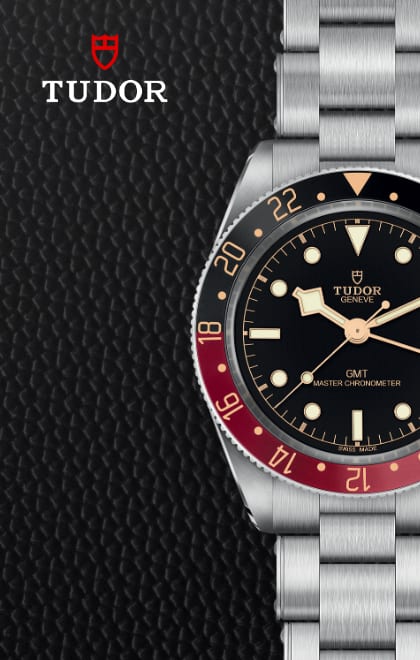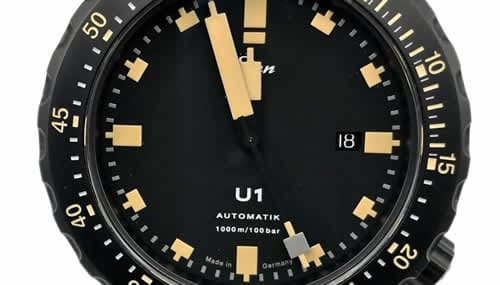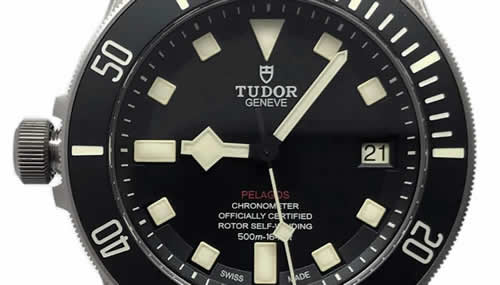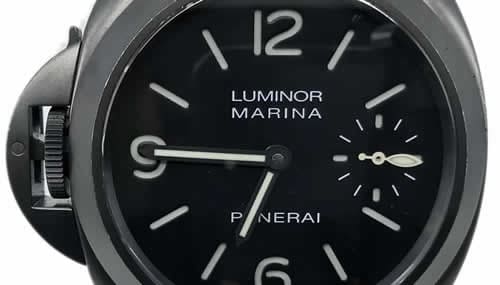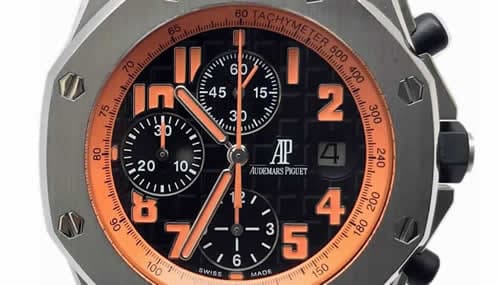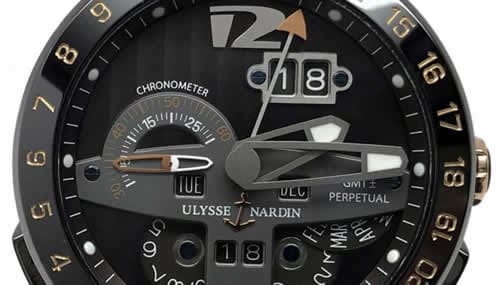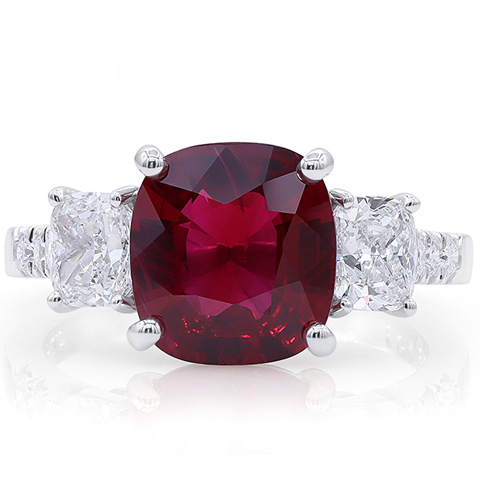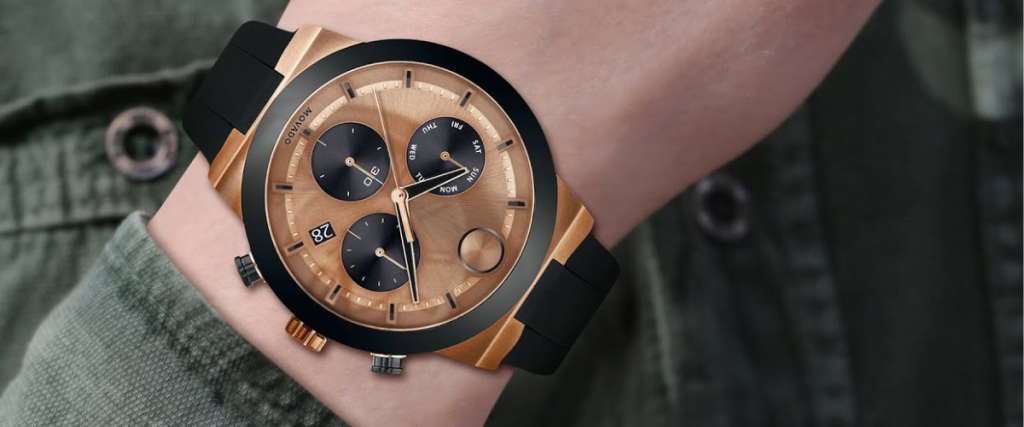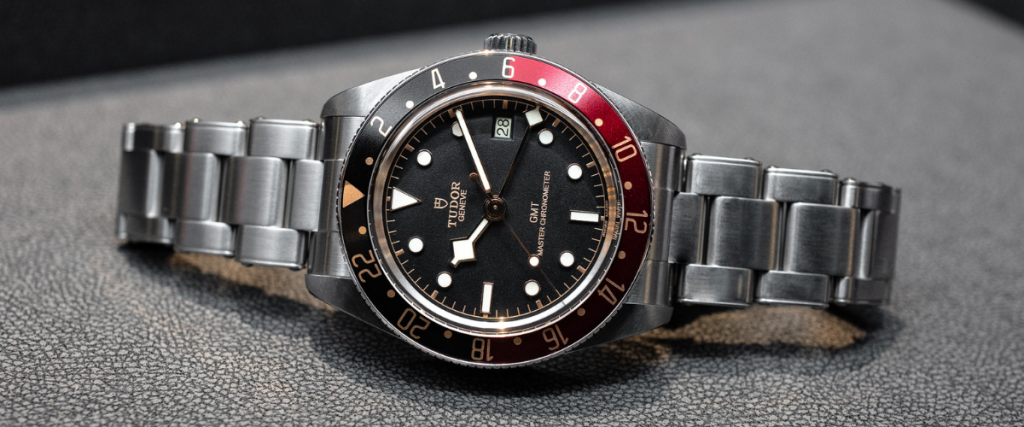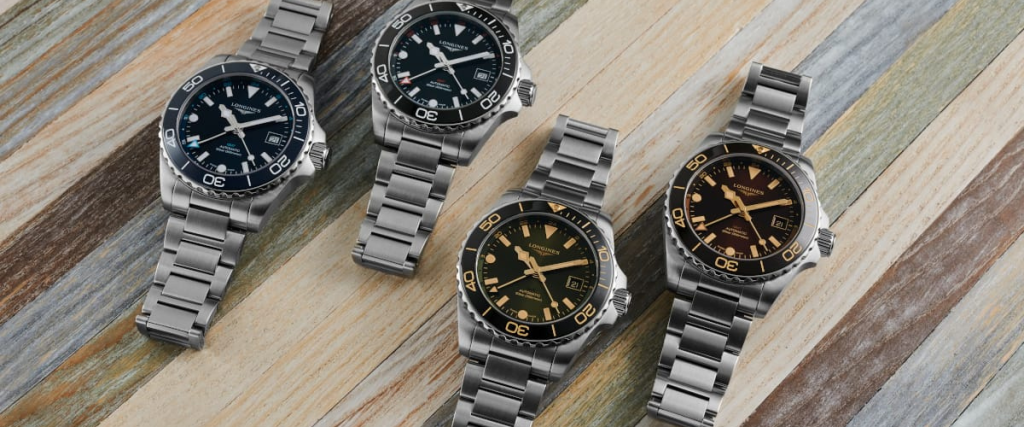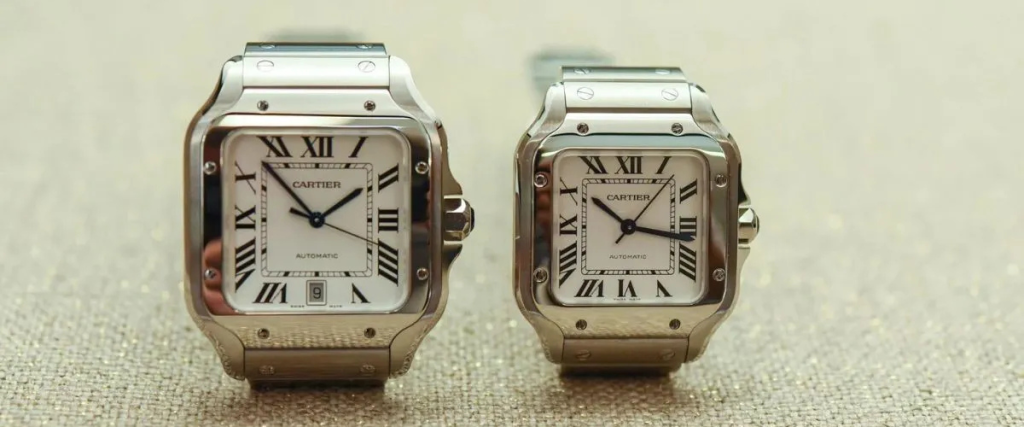
There aren’t many watch brands that can stand up to Rolex. This Swiss giant is known as one of the best of the best for a reason. And yet, there are one or two names that are as equally synonymous with prestige and craftsmanship. One such brand is Audemars Piguet.
If you’re someone new to the watch world, it’s understandable if you feel a little overwhelmed and inundated with options. There are so many fantastic watches and watch manufacturers out here that it can be difficult to know where to start.
That’s where we come in—here’s your starting point, a guide to help you compare two of the biggest names in the industry and decide which one deserves a place not just on your radar but on your wrist.
Both Rolex and Audemars Piguet are Swiss legends, but they have different histories, technologies and, most obviously, cater to very different tastes. Audemars Piguet’s bold innovation and artistry contrast with Rolex’s timeless elegance and undeniable versatility. But which one deserves a spot on your wrist?
In this article, we’ll dive into everything you need to know about Rolex and Audemars Piguet, from their groundbreaking contributions to the industry to their standout collections and the technologies and complications involved. By the end, you’ll have a clear picture of which brand is the perfect match for your style, personality, and lifestyle.
Brand Heritage

A Quick History of Rolex
Rolex’s story begins in 1905, and not in Switzerland as you might expect, but in London. Hans Wilsdorf, a young visionary with a passion for precision, teamed up with his brother-in-law Alfred Davis to create Wilsdorf & Davis, a company focused on crafting high-quality wristwatches. Back then, wristwatches were still finding their way into mainstream popularity, but Wilsdorf saw their potential and aimed to make them both accurate and elegant.
In 1908, the name “Rolex” was born. It was short, memorable, and easy to say in any language. Just a few years later, in 1910, Rolex achieved a groundbreaking milestone by becoming the first wristwatch brand to receive the Swiss Certificate of Chronometric Precision, setting the tone for its reputation as a leader in accuracy.
World War I brought changes to everyone, including Rolex, and in 1919, the company relocated to Geneva, Switzerland, to escape heavy British taxes on luxury goods. With this move, the brand truly began to flourish. The iconic Rolex Oyster debuted in 1926 as the world’s first waterproof wristwatch, and in 1931, Rolex introduced one of the first self-winding mechanisms.
Fast-forward to 1953, when the Rolex Submariner landed, becoming a symbol of adventure and one of the Swiss watchmaker’s best-known models. Today, Rolex is possibly the most familiar watch brand in the world, with everyone and their uncle knowing the crown logo, whether they’re into luxury timepieces or not.
A Quick History of Audemars Piguet
Unlike Rolex, Audemars Piguet was born in Switzerland, and it’s where the company has stayed ever since its founding in 1875. Its story started when two ambitious young watchmakers, Jules-Louis Audemars, and Edward-Auguste Piguet, joined forces to create what would become one of the most revered names in the horological world.
Their partnership was the perfect blend of talents. Audemars focused on crafting intricate, complicated movements, while Piguet took charge of ensuring their precision and managing the business side of things.
By 1881, their growing reputation led to the official establishment of Audemars Piguet & Cie, and they quickly set themselves apart from so many in the industry. While many brands embraced industrialized production – like Rolex – Audemars Piguet chose the artisanal route, crafting every timepiece with painstaking care, hand-finishing, and collaborating with local artisans.
In 1892, Audemars Piguet created the world’s first minute-repeating wristwatch movement, a feat that showcased their flair for blending tradition with bold innovation. Fast forward to 1972, and the Swiss watchmaker shook the industry once again with the legendary AP Royal Oak, the world’s first luxury sports watch. Its edgy steel design and octagonal bezel remain synonymous with bold and brilliant watchmaking.
Model Variety
Rolex
When it comes to variety, Rolex has pretty much a bit of everything. At the core of its offerings is the Oyster Perpetual, a foundational design that defines much of the brand’s lineup. With its waterproof case and self-winding movement, the Oyster Perpetual serves as the backbone for collections like the Submariner, GMT-Master, and Datejust.
Even Rolex’s sportier models, such as the Daytona or Explorer, share this DNA. However, not everything revolves around the Oyster case, with dressier lines like the Cellini and the recently introduced 1908 catering to those who prefer a more traditional, elegant look.
Rolex also excels in creating options for every wrist size and aesthetic preference. Case sizes range from a petite 31mm to a bold 44mm, ensuring a comfortable fit for everyone, regardless of gender or wrist size.
The brand also offers a dazzling array of case materials, from classic stainless steel to luxurious yellow, white, or Everose gold, and even platinum. For dial choices, the sky’s the limit, from classic silvers and navy to pastel pinks, vibrant greens, and diamond-encrusted designs.
This incredible range of designs, sizes, and styles is what makes Rolex so appealing. No matter your lifestyle or taste, it’s almost impossible not to find a Rolex that feels suited to you and your tastes.
Audemars Piguet
On the other hand, Audemars Piguet’s collections are a little more limiting. If you’re like much of the watch community, you’ve probably only heard of one AP watch: the Royal Oak.
Since its debut in 1972, this iconic design has been the centerpiece of Audemars Piguet’s lineup, with its bold octagonal bezel, integrated bracelet, and stunning finishes. It’s a watch that has changed the landscape of luxury sports watches forever, and it remains the brand’s crown jewel.
Within the Royal Oak family, there’s a surprising amount of variety. You’ll find options in stainless steel, gold, titanium, and even ceramic, along with dials that range from the classic “Tapisserie” pattern to partial or full skeleton designs.
For those who love complications, the Royal Oak lineup also offers everything from perpetual calendars to chronographs and flying tourbillons, showcasing AP’s technical prowess.
If the Royal Oak isn’t sporty enough, the Royal Oak Offshore, introduced in 1993, adds a bolder, more rugged twist to the design. And for the truly avant-garde, there’s the Royal Oak Concept collection, which pushes the boundaries of design with over-the-top crown protectors and large screw-decorated bezels.
Beyond the Royal Oak, Audemars Piguet does offer a few alternatives, such as the retro-inspired [Re]master or the dressy, contemporary Code 11.59 collection. However, these models don’t enjoy the same spotlight as their Royal Oak siblings.
The downside? If you’re not a fan of the Royal Oak’s distinctive integrated design, your choices within Audemars Piguet’s lineup are quite limited. Still, for those who appreciate bold design and groundbreaking technology, the Royal Oak and its many variations are nothing short of extraordinary.
Design
When it comes to design principles, Rolex and Audemars Piguet sit at opposite ends of the spectrum. They both have a distinct design philosophy that they rarely deviate from, and that’s one of the reasons they have gained such a huge gathering of fans, just both with different tastes.
Rolex
For starters, Rolex feels largely driven by timelessness and simplicity. Their design philosophy is built around creating watches that feel as relevant today as they did decades ago and will continue to feel the same for decades to come. Rather than chasing trends, Rolex refines its designs incrementally, ensuring each evolution honors its legacy while embracing modernity.
Think of the Submariner’s clean lines, the Datejust’s classic proportions, or the GMT-Master’s instantly recognizable bezel. These designs are deliberate in their restraint, focusing on practicality and versatility. Details like the Cyclops lens for date magnification and the robust Oyster case are examples of Rolex’s ability to combine functional innovation with understated elegance.
Audemars Piguet
Meanwhile, Audemars Piguet is significantly more daring and clearly prefers to push the boundaries of design, even if that means isolating a watch collector or two.
From the moment the Royal Oak hit the scene in 1972 with its audacious octagonal bezel and exposed screws, AP cemented its reputation as a brand that thrives on disruption. Its designs are bold, often unconventional, and unapologetically attention-grabbing.
It’s really this that sets Audemars Piguet apart. They have an uncanny ability to marry artistry with technical mastery, which is showcased through their many skeletonized dials, intricate complications, and bold, geometric cases.
Collections like the Royal Oak Concept show just how far the brand is willing to go in exploring futuristic design, while the Code 11.59 proves they can still interpret elegance, but again in a way that’s unique and very much Audemars Piguet.
Build Quality & Materials
Rolex
When it comes to build quality, Rolex is very hard to criticize. The brand’s use of 904L stainless steel, a material Rolex calls “Oystersteel”, is really quite remarkable and one of the best case materials in the watchmaking game. It’s a high-grade alloy that’s corrosion-resistant, tough as nails, and has a subtle, gorgeous luster that you won’t find in your average stainless steel.
Add to that the meticulous polishing and brushing, and you’ve got a watch that can go from the depths of the ocean to a black-tie gala with ease.
Rolex also loves mixing it up with proprietary materials like Rolesor, a striking blend of Oystersteel and 18-karat gold. Their sapphire crystals are also nearly scratch-proof, and even details like the crowns and bezels are engineered to perfection.
Finishing extends to every component, from the seamless integration of the Oyster bracelet to the unblemished sheen of their dials, whether it’s a vibrant sunburst or a diamond-studded masterpiece.
Audemars Piguet
While Rolex seems to focus predominantly on the functionality of their watches when it comes to the materials and finishes they use, Audemars Piguet veers more towards a philosophy where each timepiece is ultimately a work of art.
For example, the Royal Oak’s “Tapisserie” dials are legendary, featuring intricate hand-crafted patterns that create stunning plays of light. This level of texture and detail is something Rolex rarely dabbles in and is synonymous with AP.
You also can’t fault the Royal Oak bracelet. In fact, they are some of the finest metal bracelets in the luxury watch industry, in my opinion. The breathtaking blend of angular bevels with brushed and polished surfaces makes the design feel almost architectural.
It’s the kind of craftsmanship you don’t just see often, and you feel it every time you fasten it to your wrist. Finally, while there are plenty of steel and gold watches in Audemars Piguet’s portfolio, the brand also tends to lean into exotic materials like ceramic, titanium, and platinum, which reinforces their philosophy that watches are wearable pieces of art.
Movements
Rolex
When it comes to movements, Rolex and Audemars Piguet differ greatly, too. For Rolex, there’s a clear focus on precision, durability, and reliability. Every Rolex timepiece houses an in-house caliber that’s built to last for decades.
Rolex movements are often seen labeled as “Superlative Chronometers”, meaning they meet an extraordinary accuracy standard of -2 to +2 seconds per day. That’s one of the tightest tolerances in the watchmaking world.
This level of precision is achieved through innovations like the Parachrom hairspring, which is resistant to magnetic fields and almost completely unaffected by extreme temperatures.
Yet, while Rolex movements are marvels of engineering, they’re also pragmatic. They don’t chase the kind of intricate complications seen in haute horology. Instead, their calibers excel at simplicity.
They offer reliable timekeeping with classic features like date displays, dual time zones, and chronographs. They’re also practical with basic finishing – at least in comparison to Audemars Piguet. The cases often have a closed case back, which again emphasizes that the movement is about performance rather than visual appeal.
Audemars Piguet
Like their cases and dials, Audemars Piguet’s movements focus greatly on aesthetic beauty and cutting-edge technology. They still only use in-house calibres, but their focus shifts from pure precision to showcasing innovative design and visual artistry.
Some of their best-known complications include the perpetual calendar, minute repeater, and flying tourbillon – some of the hardest and most complex complications to engineer.
Their movements are also meticulously hand-finished. Techniques like perlage, Côtes de Genève, and polished bevelling adorn the components, making their movements miniature works of art that can be regularly viewed through exhibition case backs.
However, this complexity does come with trade-offs. While Audemars Piguet calibers are breathtakingly intricate, this also means they can be more sensitive and require regular maintenance. Some of their chronograph movements use modular constructions rather than fully integrated designs, which can sometimes impact performance.
Price Point & Collectability
Rolex
Rolex watches occupy a rather broad pricing spectrum, offering entry-level models at more accessible prices compared to Audemars Piguet. Prices for Rolex models can range from just over $5,000 for entry-level models like the Oyster Perpetual to well over $100,000 for more intricate pieces, like the Day-Date in precious metals.
Rolex watches are also well-known to hold their value, especially if taken care of. In fact, the market’s appetite for Rolex is so strong that it’s widely regarded as one of the best investments in the luxury watch market, with some models even outperforming other luxury brands in terms of resale value. Vintage Rolex models especially have seen substantial price increases at auctions, often fetching more than their original retail price.
Audemars Piguet
Audemars Piguet watches tend to fall on the higher end of the luxury watch spectrum, with prices reflecting their intricate craftsmanship, complex complications, and limited production. Their most affordable models retail for around $10,000 and go up to $450,000.
A key factor in AP’s premium pricing is the exclusivity of their designs, especially with iconic models like the Royal Oak. Many of their timepieces feature rare materials such as platinum or rose gold, and complex movements like minute repeaters or flying tourbillons, making them highly coveted among collectors. Limited edition models and their low production numbers further contribute to their rarity.
While Audemars Piguet watches typically carry higher price tags than Rolex, they still hold strong value in the resale market, especially the Royal Oak models and vintage pieces. However, when compared to Rolex, AP watches tend to experience slower value appreciation. Despite this, owning an Audemars Piguet is more about owning a unique, artistic masterpiece rather than a simple investment.
Conclusion
In the end, choosing between Audemars Piguet and Rolex comes down to personal preference and what you value most in a luxury watch. Both brands are undeniably exceptional, each with its own distinctive qualities that set them apart.
Rolex excels in versatility, precision, and status, offering a broad range of models that cater to different tastes and lifestyles. Their watches are iconic, reliable, and maintain excellent resale value, making them an ideal choice for someone looking for a classic, dependable timepiece that is also a solid investment.
On the other hand, Audemars Piguet is a brand that speaks to those who appreciate artistry, innovation, and exclusivity. With its bold designs, especially the iconic Royal Oak, AP caters to watch enthusiasts who want a timepiece that stands out and pushes the boundaries of traditional watchmaking.
The complexity of their movements and the rarity of their models make them a choice for collectors who seek something unique and are willing to invest in a piece of horological artistry.


